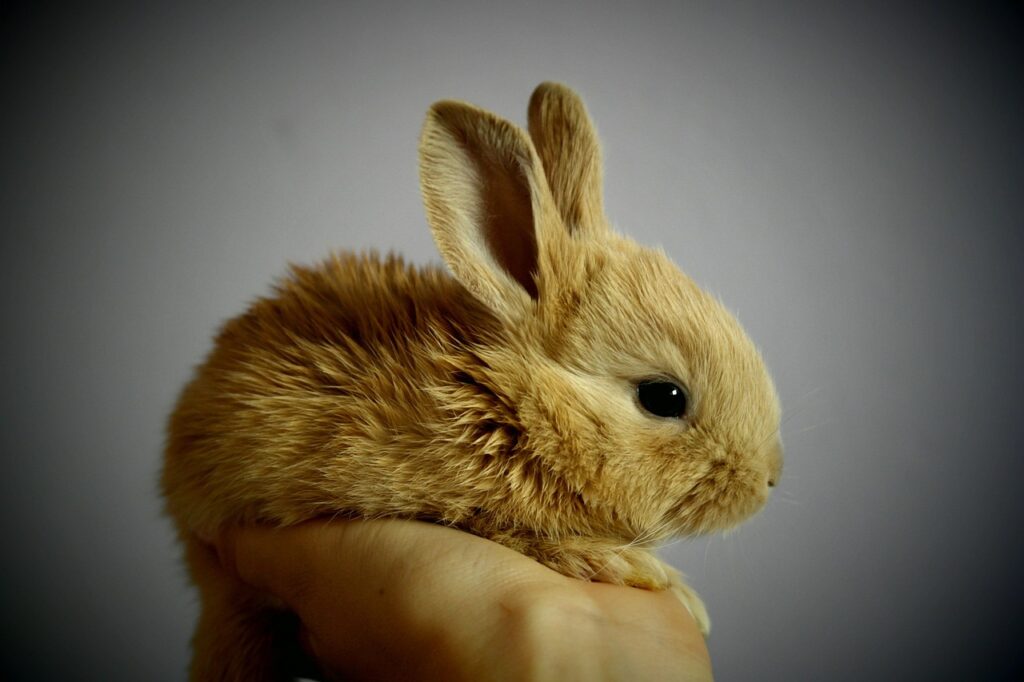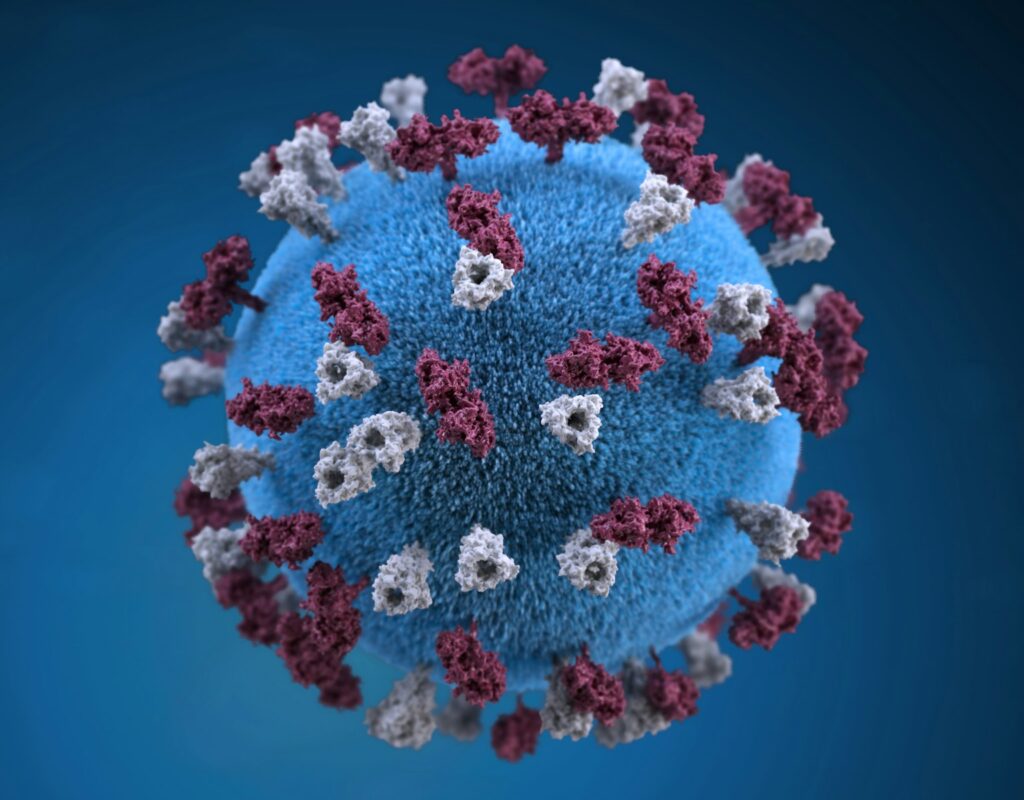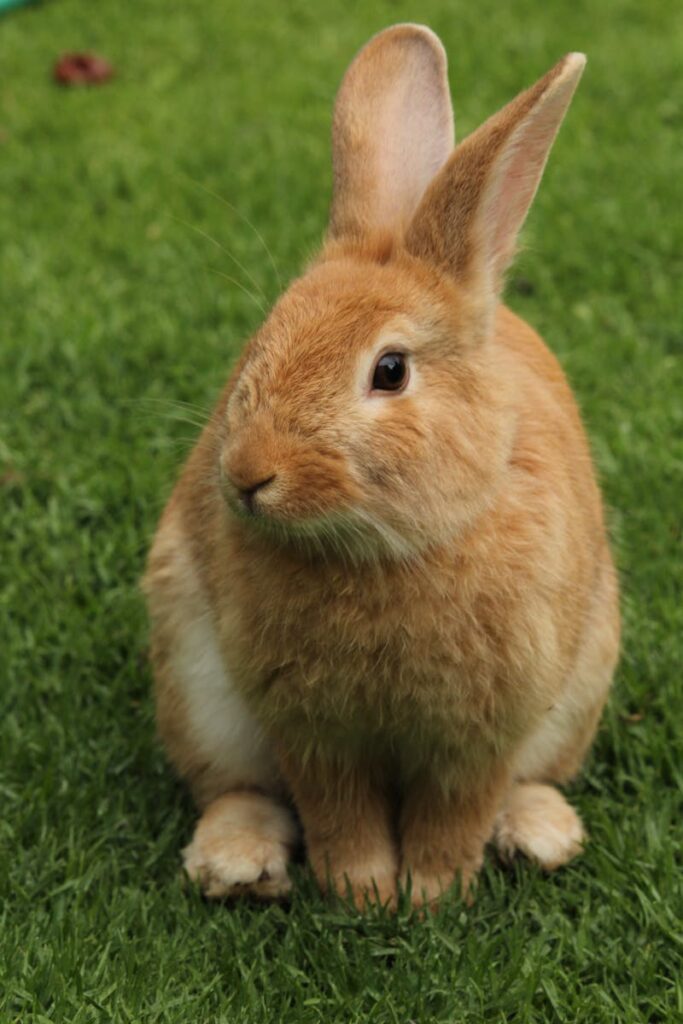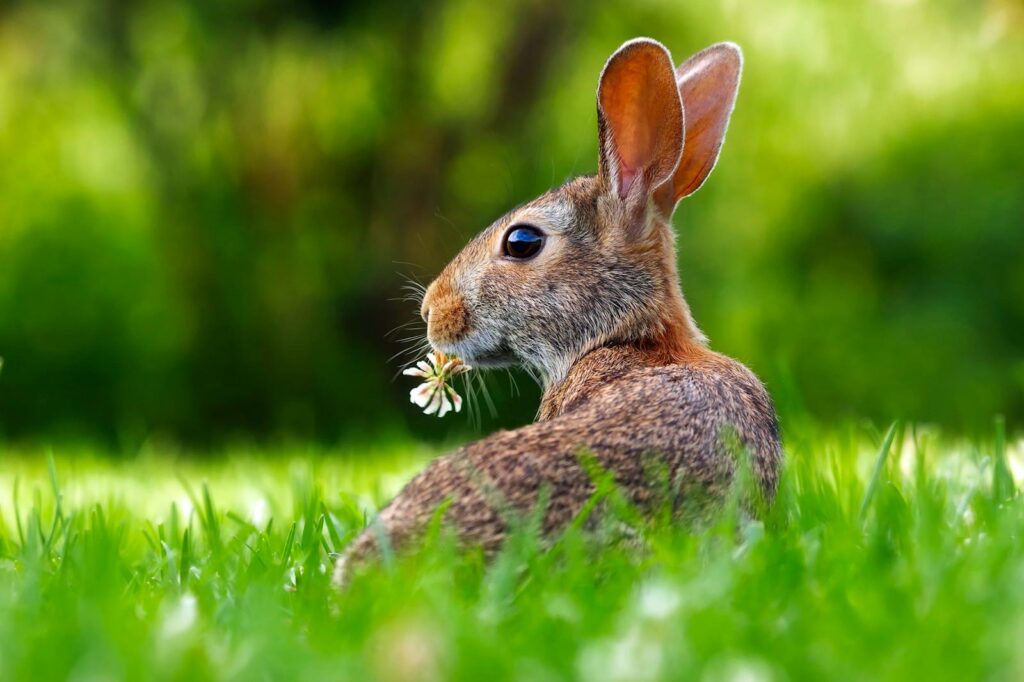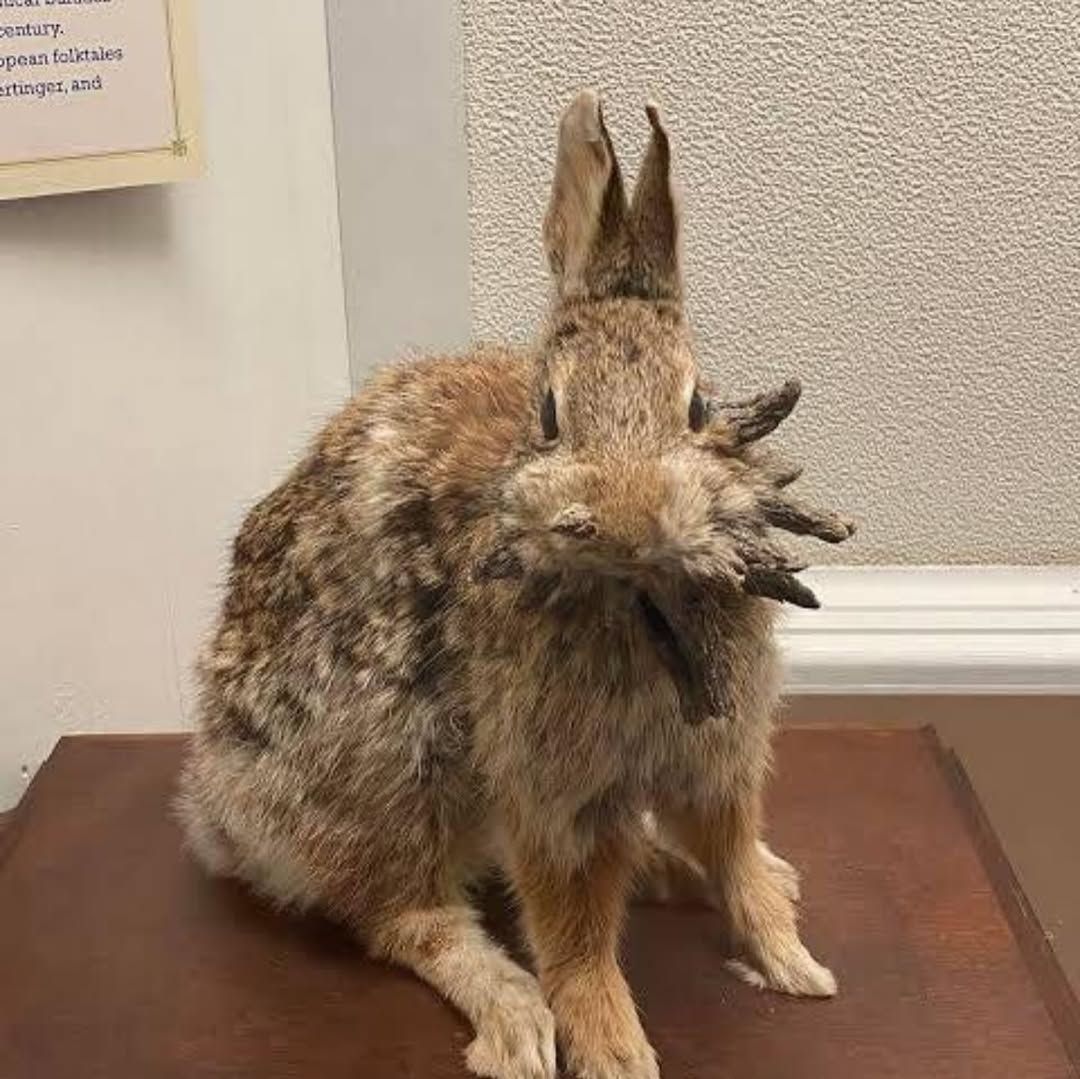
In the vast and varied landscapes of Colorado, a peculiar sight has been capturing the attention of residents and sparking a flurry of discussion: rabbits adorned with startling, horn-like growths. These creatures, seemingly plucked from the pages of a fantasy novel or a low-budget horror film, have quickly earned themselves a host of vivid, albeit unflattering, nicknames such as ‘Frankenstein bunnies,’ ‘demon rabbits,’ and even ‘zombie rabbits.’ The initial reaction might be one of alarm, a sense of something truly unsettling manifesting in the natural world around us. Yet, as with many seemingly inexplicable natural phenomena, there is a fascinating scientific explanation that transforms fright into profound understanding.
Far from being a harbinger of the supernatural or a sign of some monstrous mutation, these unique rabbits are merely exhibiting the effects of a relatively common viral infection. This condition, while visually dramatic, is largely harmless to the rabbits themselves and poses no threat to humans or other animal species. The story of these ‘horned’ cottontails is not one of grotesque anomaly, but rather a compelling narrative of ecological balance, viral mechanics, and the persistent interplay between scientific discovery and the enduring power of folklore.
Join us on a journey to unravel the truth behind these intriguing creatures. We will delve into the precise nature of their affliction, explore its deep historical roots, and uncover how these seemingly minor cases of rabbit warts have, over time, contributed significantly to our broader understanding of viruses and their profound connection to disease, including insights that have benefited human health. This is a tale that bridges the gap between ancient myths and modern biological breakthroughs, all centered around the unexpected wisdom held within the unassuming world of a rabbit.
1. **The Baffling Appearance: Grotesque Horn-like Growths**The most striking feature of these rabbits is undoubtedly the bizarre growths that protrude from their faces, often described as black quills, toothpicks, or scabby-looking textures. These excrescences can appear incredibly strange, resembling waxy tumors that, upon prolonged growth, take on a distinct horn-like shape. It is this peculiar visual that immediately captures attention and fuels the imaginative, often frightening, monikers bestowed upon these animals by startled observers. The sight of a rabbit with such prominent, dark, and seemingly alien appendages certainly defies conventional expectations of wildlife.
These growths are not a result of some unknown environmental factor or a new, terrifying mutation, but rather a direct manifestation of a specific viral infection. Their appearance can range from small, wart-like bumps to elongated, branching structures, dramatically altering the rabbit’s familiar visage. The severity and extent of these growths can vary, with some rabbits exhibiting only minor blemishes while others display more extensive and pronounced ‘horns,’ truly embodying the ‘Frankenstein’ description that has become so popular among those who encounter them.
Despite their alarming appearance, which might suggest a painful or debilitating condition, the growths themselves are generally not harmful to the rabbits. They are external manifestations of an internal viral process, and in most cases, they do not impede the rabbit’s daily life. It’s a testament to the resilience of nature that these creatures can continue to forage, interact, and survive even with such dramatic modifications to their physical form, challenging our preconceived notions of what constitutes ‘healthy’ in the wild.
2. **The Scientific Reality: Shope Papillomavirus**At the heart of this perplexing phenomenon lies the Shope papillomavirus, often abbreviated as SPV. This specific virus is the direct cause of the wart-like growths seen on the Colorado cottontails. It belongs to the papillomavirus family, a group of viruses known for their ability to induce benign growths on the skin or mucous membranes of their hosts. While the visual outcome can be quite startling, SPV is, in fact, a mostly harmless pathogen within its natural rabbit host population.
The virus primarily affects cottontail rabbits, a common species across North America. When a rabbit becomes infected with SPV, the virus triggers an uncontrolled proliferation of skin cells, leading to the formation of these distinctive growths. These aren’t cancerous in the malicious, spreading sense that we often associate with tumors; rather, they are localized, benign skin lesions. Understanding this fundamental biological mechanism helps demystify the ‘horns’ and grounds the phenomenon in established scientific principles, moving beyond mere speculation or fear.
SPV is an example of a species-specific virus, meaning it has evolved to thrive within a particular host – in this case, the rabbit. This specificity is crucial to understanding why, despite its visually dramatic effects on rabbits, it poses no threat to humans, pets, or other animal species. The virus’s genetic makeup and cellular interactions are tailored for the rabbit’s physiological environment, making it unable to replicate or cause disease in other organisms. This biological safeguard ensures that these ‘Frankenstein bunnies’ remain a curiosity of the wild, rather than a widespread public health concern.
3. **Nicknames Born of Viral Photos: Frankenstein Bunnies and More**The immediate visual impact of rabbits with these growths has predictably led to an explosion of nicknames, driven largely by the viral spread of their photographs across social media and local news channels. Frankenstein bunnies’ is perhaps the most prominent and illustrative, conjuring images of a creature patched together from disparate parts, much like Mary Shelley’s iconic monster. The term captures the unsettling, almost unnatural, appearance of these afflicted animals, quickly becoming a catchy identifier for a truly unusual sight.
Beyond ‘Frankenstein bunnies,’ other evocative names have emerged, such as ‘demon rabbits’ and ‘zombie rabbits.’ These monikers reflect the initial shock and perhaps a touch of macabre fascination that people experience when encountering these creatures. ‘Demon rabbits’ speaks to the dark, horn-like protrusions, evoking mythical evil, while ‘zombie rabbits’ hints at a diseased, uncoordinated appearance, though the rabbits themselves are typically quite active and healthy. The sheer creativity in these nicknames underscores the profound impression these unique animals leave on the human imagination.
These nicknames, while unofficial and often sensationalized, serve a purpose in public discourse. They create a memorable shorthand for a complex biological phenomenon, making it accessible and shareable. While scientists and wildlife experts use precise terminology like ‘Shope papillomavirus,’ the public’s more colorful lexicon highlights the human tendency to anthropomorphize and mythologize the natural world, transforming a simple viral infection into a captivating story. It also helps to spread awareness, prompting curious individuals to seek out the underlying scientific explanations behind these captivating images.
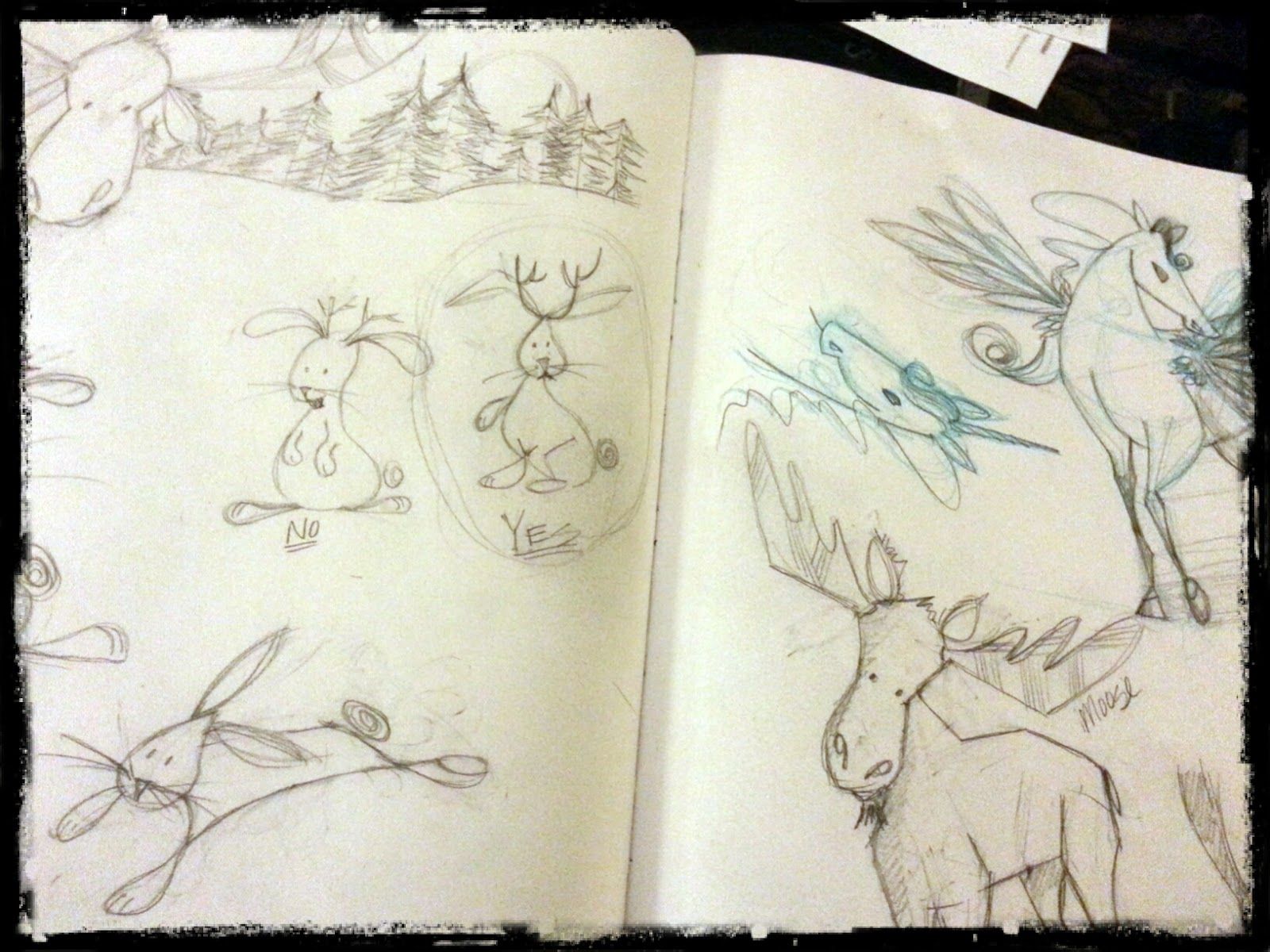
4. **Echoes of Ancient Lore: The Jackalope Myth**What makes the Shope papillomavirus particularly compelling is its unexpected link to centuries-old folklore, specifically the North American jackalope myth. This enduring legend speaks of a mythical creature – a rabbit with the antlers or horns of an antelope, or sometimes, other animal variations. For generations, tales of the jackalope have been woven into the fabric of regional lore, captivating imaginations and serving as a quirky symbol of the American West. The striking resemblance between the mythical jackalope and real rabbits infected with SPV is too profound to be coincidental.
Scientists widely believe that sightings of rabbits with prominent SPV growths provided the tangible inspiration for the jackalope legend. Imagine early settlers or Native American communities encountering a rabbit with large, bony-looking protrusions on its head. Without the benefit of modern virology, such a sight would undoubtedly have been interpreted through the lens of myth and wonder, giving birth to stories of a hybrid creature. The visual evidence presented by SPV-infected rabbits provides a strong, plausible explanation for the origin of this beloved piece of Americana.
This connection highlights a fascinating aspect of human interaction with the natural world: how genuine biological phenomena can seed enduring cultural narratives. The Shope papillomavirus, a microscopic entity, has indirectly shaped a significant piece of North American folklore. It serves as a powerful reminder that while science seeks to explain, human culture often interprets, creating a rich tapestry where observation, imagination, and shared storytelling intertwine. The ‘Frankenstein bunnies’ of today are, in a sense, the living embodiment of a myth that has persisted for centuries.

5. **A Groundbreaking Discovery: Dr. Richard E. Shope’s Legacy**The scientific understanding of the Shope papillomavirus dates back nearly a century, to the pioneering work of Dr. Richard E. Shope. A distinguished professor at The Rockefeller University, Dr. Shope made a significant breakthrough in the 1930s when he first identified and studied this peculiar disease in cottontail rabbits. His meticulous research laid the foundational understanding of the virus, forever linking his name to the condition it causes. This discovery marked a pivotal moment in virology, expanding humanity’s knowledge of the microbial world.
Dr. Shope’s work wasn’t merely about documenting a strange rabbit ailment; it was about understanding the fundamental nature of viruses and their interaction with their hosts. At a time when much was still unknown about viral mechanisms, his research provided crucial insights into how a virus could induce abnormal growths. The formal naming of the virus after him, the Shope papillomavirus, is a testament to the profound and lasting impact of his scientific contributions. His dedication to observing and unraveling biological mysteries paved the way for future discoveries.
The legacy of Dr. Richard E. Shope extends far beyond the realm of rabbit pathology. His identification of SPV was a crucial step in the broader field of virology, contributing to the development of techniques and conceptual frameworks for studying viral diseases. It underscored the importance of diligent observation in natural populations as a pathway to significant scientific breakthroughs. His work remains a foundational cornerstone in the history of viral research, demonstrating how seemingly obscure animal diseases can yield universally applicable knowledge.
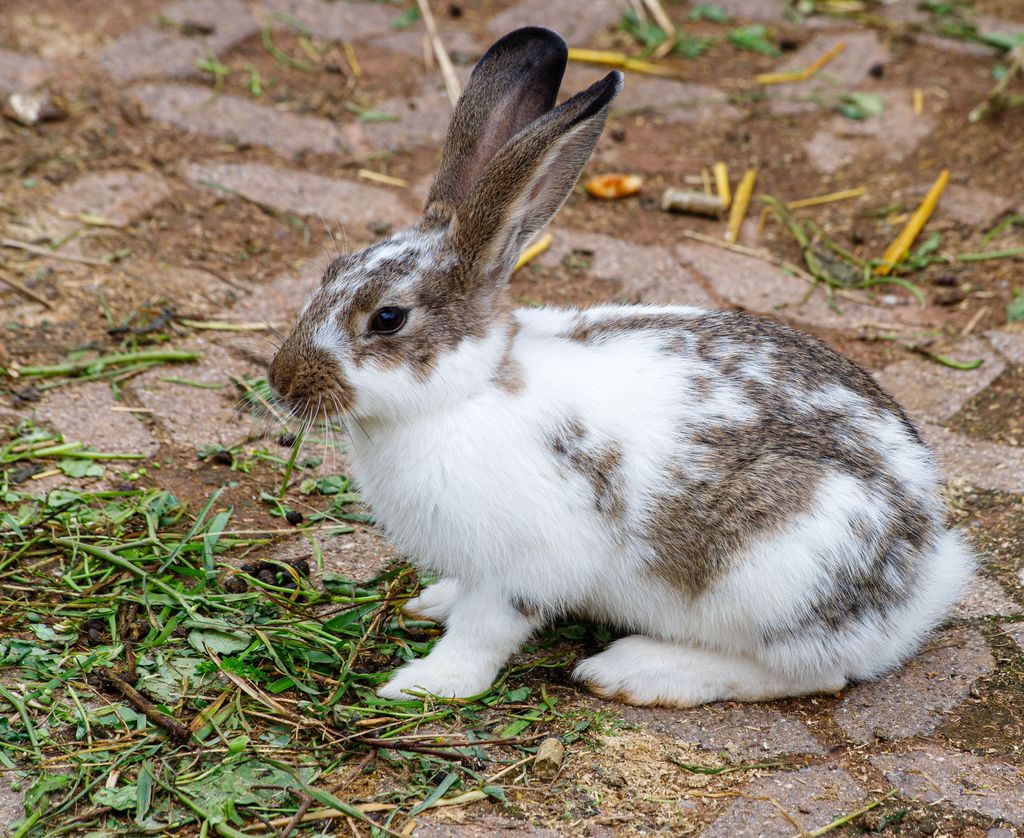
6. **Beyond Rabbits: A Link to Human Cancer Research**Perhaps one of the most profound and unexpected impacts of the Shope papillomavirus lies in its contribution to human medical science, particularly in the understanding of the connection between viruses and cancer. While SPV itself does not infect humans, its study provided an invaluable model for researchers investigating virally-induced cancers. The very mechanism by which SPV causes wart-like growths in rabbits offered a critical analogous system for exploring similar processes in humans.
Specifically, the research on SPV greatly advanced scientists’ knowledge about the human papillomavirus (HPV). HPV is a widely recognized virus that, in certain strains, is known to cause cervical cancer, among other cancers in humans. The fundamental principle – that a papillomavirus can induce abnormal cellular growth, which, in some contexts, can progress to malignancy – was first elucidated and understood through the study of SPV in rabbits. This early work provided critical groundwork, demonstrating that viruses could indeed be oncogenic, meaning they have the potential to cause cancer.
Thus, the seemingly harmless ‘Frankenstein bunnies’ of today stand as a living testament to a scientific lineage that has directly informed our understanding and prevention strategies for human diseases. The initial observations of growths on rabbits, followed by rigorous scientific inquiry, opened doors to breakthroughs in cancer research that have saved countless human lives. It’s a powerful illustration of how discoveries in veterinary medicine and wildlife biology can have far-reaching implications for human health, underscoring the interconnectedness of all biological life.
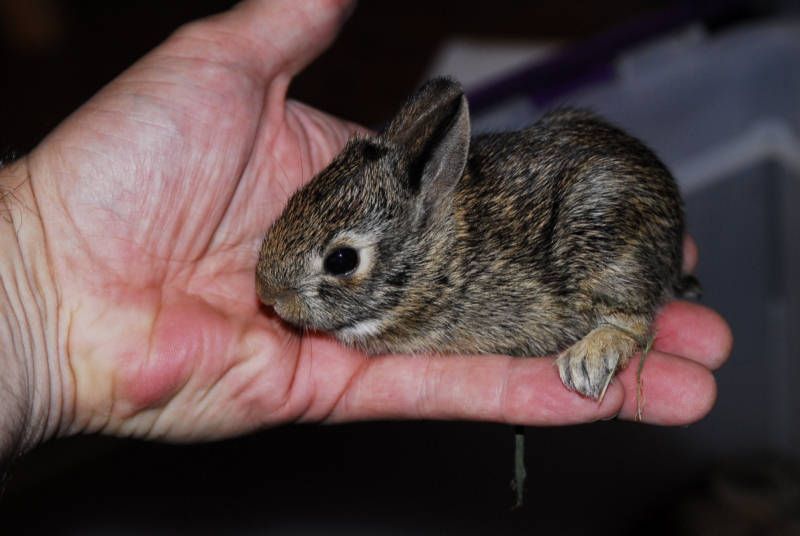
7. **Recent Sightings Stirring Curiosity: Fort Collins, Colorado**The current wave of attention surrounding these ‘horned’ rabbits stems from recent sightings in Fort Collins, Colorado, approximately 65 miles north of Denver. Residents in the area have reported encountering these unusual cottontails around town, with many sharing photographs that quickly went viral. These images brought the long-standing phenomenon of SPV-infected rabbits back into the public spotlight, prompting renewed interest and inquiries about these unique animals.
The Colorado Parks and Wildlife (CPW) agency has confirmed receiving calls about these rabbits from concerned or curious residents in Fort Collins. This surge in public reports underscores the visual impact of the condition and the natural human tendency to seek explanations for unfamiliar sights in their local environment. The public’s engagement, driven by both alarm and fascination, has once again highlighted the prevalence of this virus in wild rabbit populations.
These recent sightings serve as a contemporary chapter in the ongoing story of the Shope papillomavirus. They remind us that while the virus has been known for nearly a century and its connection to folklore dates back even further, its physical manifestations continue to capture attention and spark conversation. The continued appearance of these ‘Frankenstein bunnies’ in places like Fort Collins reaffirms the enduring presence of this virus in nature and provides a unique opportunity for public education about wildlife health and fascinating biological processes.

8. **The Silent Spreaders: Vectors of the Virus**Having illuminated the origins and broader impact of the Shope papillomavirus, we now turn our gaze to the fascinating intricacies of its transmission. While the sight of a ‘horned’ rabbit might spark questions of direct contagion, the virus, in fact, relies on a less direct, yet highly efficient, network of tiny intermediaries. It is through the diligent, albeit unwitting, work of biting insects like fleas and ticks that SPV makes its journey from one rabbit to another, perpetuating its presence within wild populations.
These minute arthropods become the primary vectors, transferring the virus as they feed on the blood of an infected rabbit and then subsequently bite an uninfected one. This mode of transmission explains why cases of SPV, while present year-round, tend to peak during the warmer months. As Kara Van Hoose, a spokesperson for Colorado Parks and Wildlife, confirmed, summer is a period of heightened activity for fleas and ticks, creating optimal conditions for the virus to spread and manifest in more noticeable ways across the rabbit community.
Crucially, this specific transmission pathway highlights the biological safeguards inherent in nature. The virus is highly species-specific, meaning its ability to replicate and cause disease is finely tuned to the physiology of rabbits, particularly cottontails. This biological lock-and-key mechanism ensures that, despite the alarming appearance of infected rabbits, the Shope papillomavirus cannot spread to humans, domestic pets, or other wildlife species. It remains a fascinating, albeit visually striking, phenomenon confined to its designated hosts.

9. **Summer’s Annual Resurgence: The Rhythmic Cycle of SPV**The prevalence of ‘Frankenstein bunnies’ in the wild is not a random occurrence but rather follows a discernible seasonal pattern, deeply intertwined with the life cycles of both rabbits and their insect vectors. It is “especially in the summer,” as noted by wildlife experts, when the conditions align perfectly for the virus to become most active and for its visible manifestations to appear with greater frequency. This period is characterized by a confluence of factors that amplify the chances of viral spread within rabbit populations.
During the summer months, there is typically a higher density of rabbits, particularly young ones, congregating in various habitats, which increases the likelihood of close contact and subsequent transmission. Concurrently, the warmer weather invigorates the populations of fleas and ticks, the primary carriers of SPV. Their increased activity translates to more opportunities for bites and, consequently, more chances for the virus to jump from an infected rabbit to a new host, leading to a noticeable surge in sightings of these ‘horned’ creatures.
While reports of these unique rabbits may spike, it is important to understand that a flurry of sightings does not necessarily equate to an exponential increase in individual cases. Kara Van Hoose speculates that “many people are likely seeing the same group of infected rabbits.” This nuance suggests that the localized, visually striking nature of the growths, combined with the heightened outdoor activity of both humans and wildlife during summer, contributes more to the perceived increase in ‘Frankenstein bunny’ encounters than a widespread outbreak of the virus itself.
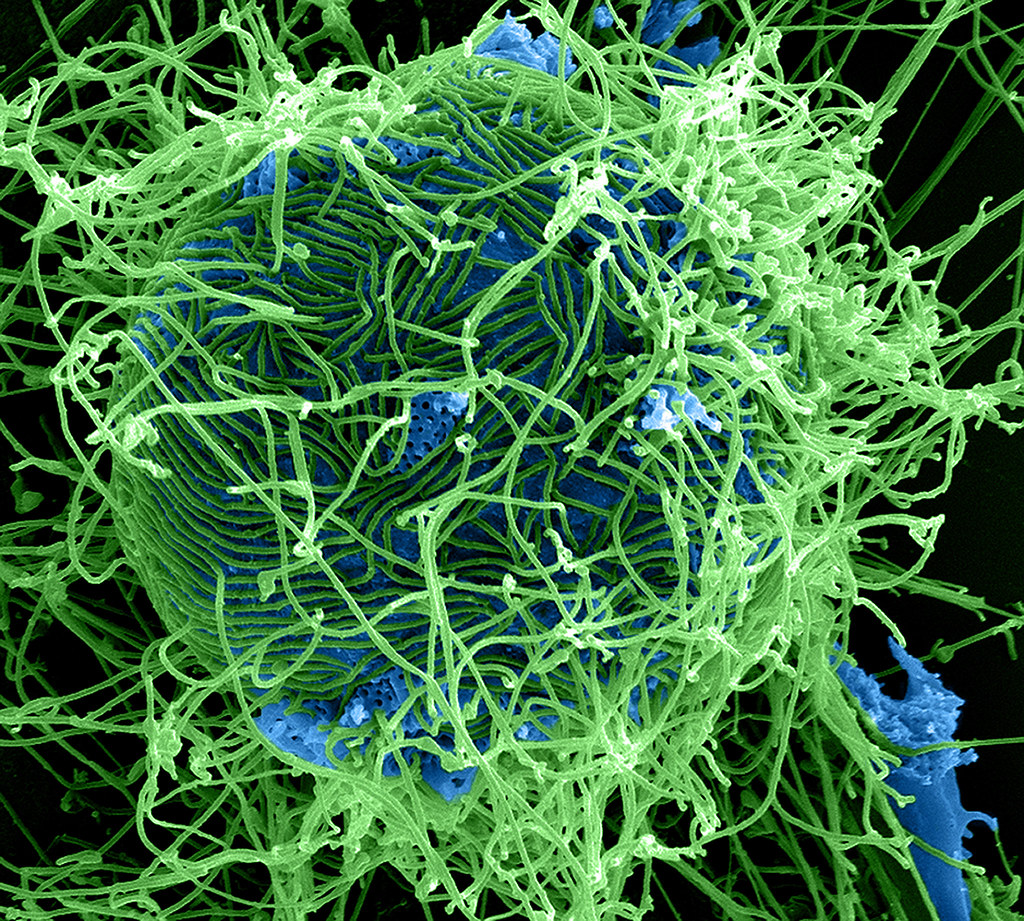
10. **A Question of Impact: When Growths Impede Life**Despite their often grotesque and alarming appearance, the wart-like growths caused by the Shope papillomavirus are, in most instances, surprisingly benign for the affected rabbits. These excrescences are primarily external skin lesions and generally “don’t harm rabbits unless they grow on their eyes or mouths and interfere with eating.” This critical distinction separates the visual shock from the actual physiological impact on the animal, underscoring the resilience of wild creatures.
Most rabbits infected with SPV continue to forage, move, and behave normally, demonstrating a remarkable ability to adapt to their unique adornments. However, there are indeed rare cases where the growths can become problematic. If the warts develop around the eyes, they can obstruct vision, potentially making it difficult for the rabbit to locate food or detect predators. Similarly, growths around the mouth can physically impede the ability to graze or drink, leading to malnourishment or dehydration.
Julie Lindstrom, a supervisor at Sioux Falls Police Animal Control, offered a practical tip for observers: “A person may be able to spot if this is a problem if they notice the rabbit doesn’t seem able to hop properly.” This is an important indicator, as impaired mobility could signal a rabbit weakened by an inability to eat or drink effectively. While such severe impairments are not the norm, they represent the rare circumstances under which the virus transitions from a cosmetic curiosity to a genuine health challenge for the rabbit.
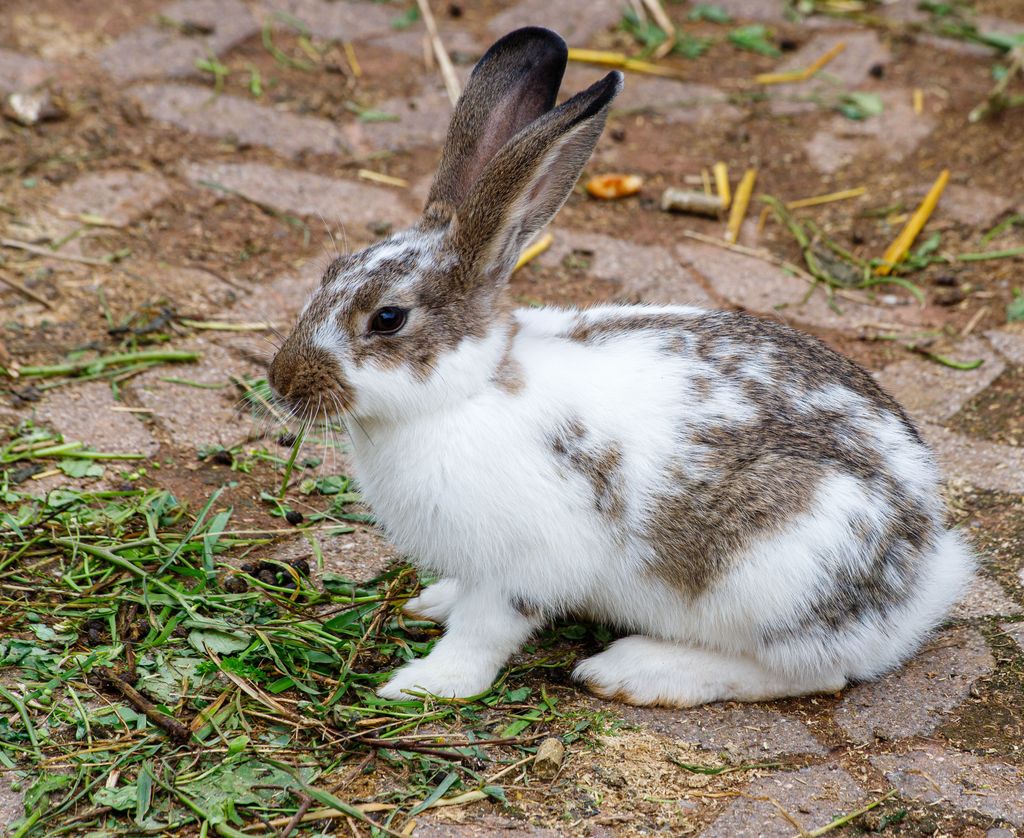
11. **Nature’s Own Cure: The Rabbit’s Immune Response**One of the most remarkable aspects of the Shope papillomavirus in rabbits is the host animal’s inherent capacity for recovery. Far from being a permanent affliction, the rabbit’s immune system is surprisingly adept at recognizing and combating the virus. This natural defense mechanism is a testament to the intricate balance of the wild, where pathogens and hosts often evolve in a dynamic equilibrium.
Wildlife experts confirm that “Rabbits’ immune systems are able to fight the virus.” This means that the infection, though visually striking, often runs its course. Over time, the rabbit’s body mounts an effective immune response, similar to how humans fight off common colds or other viral infections. This intrinsic biological process means that the ‘horned’ appearance is temporary for many individuals.
Once the rabbit’s immune system successfully clears the virus, “the growths will disappear.” This natural regression is a key factor in why wildlife agencies like Colorado Parks and Wildlife do not typically intervene with infected rabbits. It underscores that, for the vast majority of cases, nature provides its own remedy, allowing the rabbit to return to its unadorned state and continue its life in the wild without lasting impairment from the virus.
12. **Navigating Encounters: Guidelines for Public Interaction**With increased sightings of these uniquely adorned rabbits, it’s natural for curious residents to wonder about the appropriate way to interact with them. Wildlife experts, including Kara Van Hoose from Colorado Parks and Wildlife, provide clear and consistent guidance: “humans and pets should still stay away from and not interact with infected rabbits if they cross paths.” This directive prioritizes the safety and well-being of both the animals and the public.
The primary reason for this hands-off approach is to minimize stress to the wild animal and prevent any unintended interference with its natural behavior. While the Shope papillomavirus is not transmissible to humans or other animal species, maintaining a respectful distance is always the best practice when observing wildlife. It preserves the natural integrity of their environment and allows them to continue their routines undisturbed.
This guidance reinforces that despite the dramatic appearance of the growths, there is no public health concern. The ‘Frankenstein bunnies’ are a captivating natural phenomenon to observe from afar, but they are not pets in need of rescue or a threat requiring intervention. Their place is in the wild, and our role is to appreciate their unique existence responsibly.
13. **Management and Misconceptions: Why Intervention is Rarely Needed**When confronted with an animal that appears diseased or suffering, human instinct often leans towards intervention. However, in the case of wild rabbits infected with Shope papillomavirus, wildlife agencies strongly advise against such actions. The Colorado Parks and Wildlife (CPW) agency explicitly states that it “does not recommend euthanizing the infected rabbits,” and “there is no rehabilitation for wild rabbits with this disease.” This stance is rooted in a deep understanding of wildlife health and ecological balance.
This non-intervention policy stems from the fact that most infected rabbits remain healthy, and their immune systems eventually overcome the virus, leading to the growths disappearing naturally. Unlike conditions that cause severe, irreversible suffering or pose a widespread threat to human or animal populations, SPV is generally self-limiting in its natural host. Animal control agencies, such as Sioux Falls Police Animal Control, echo this sentiment, with supervisor Julie Lindstrom noting that “If someone sees a rabbit with the black tumors on its head or neck it is not a concern for Animal Control.
The limited instances where intervention might be considered are solely for cases where the growths are undeniably impeding the rabbit’s ability to survive, such as severe interference with eating or vision. Even in these rare situations, the focus remains on minimal human interference with wild populations. This approach acknowledges that while the sight can be unsettling, these rabbits are wild animals thriving within their natural ecosystem, capable of managing their health without human assistance in most circumstances.
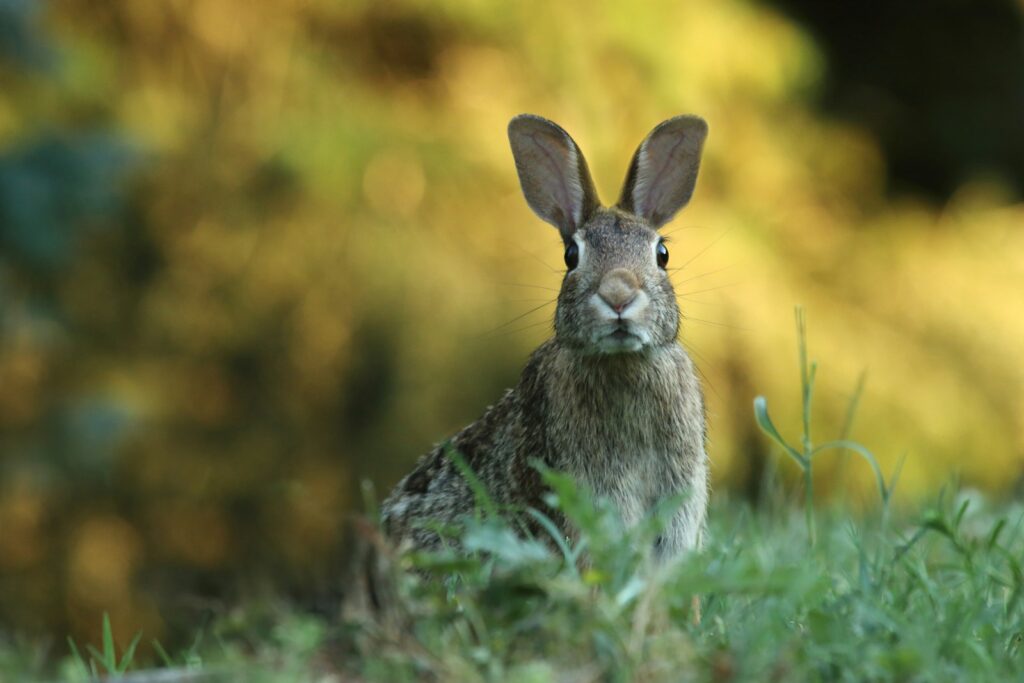
14. **A Broader Canvas: SPV Across the Continent**While recent sightings in Fort Collins, Colorado, have brought the Shope papillomavirus into the spotlight, it is crucial to recognize that these ‘Frankenstein bunnies’ are not an isolated Colorado phenomenon. The virus is, in fact, present in wild rabbit populations across various regions of North America, periodically making its appearance and sparking curiosity wherever it emerges. It “tends to pop up in the summer in states like Colorado, South Dakota, Minnesota and Texas,” indicating a wider geographic footprint for this fascinating natural occurrence.
This broader distribution underscores that the Shope papillomavirus is a long-established part of the natural ecology of cottontail rabbits across the continent. Its appearance in different states seasonally is a testament to its enduring presence and the consistent role of its insect vectors in maintaining its cycle. Far from being a novel or alarming mutation, the ‘horned’ rabbits are a recurring feature of the North American wilderness, a testament to the complex and often surprising realities of wildlife health.
From the ancient folklore of the jackalope to groundbreaking cancer research and the curious sightings in modern-day towns, the story of the Shope papillomavirus is a compelling narrative of how a seemingly minor viral infection in a common wild animal can ripple through history, science, and human culture. These ‘Frankenstein bunnies’ remind us that even the most peculiar natural phenomena hold profound lessons, inviting us to look closer, understand deeper, and marvel at the intricate wonders of the living world around us.

